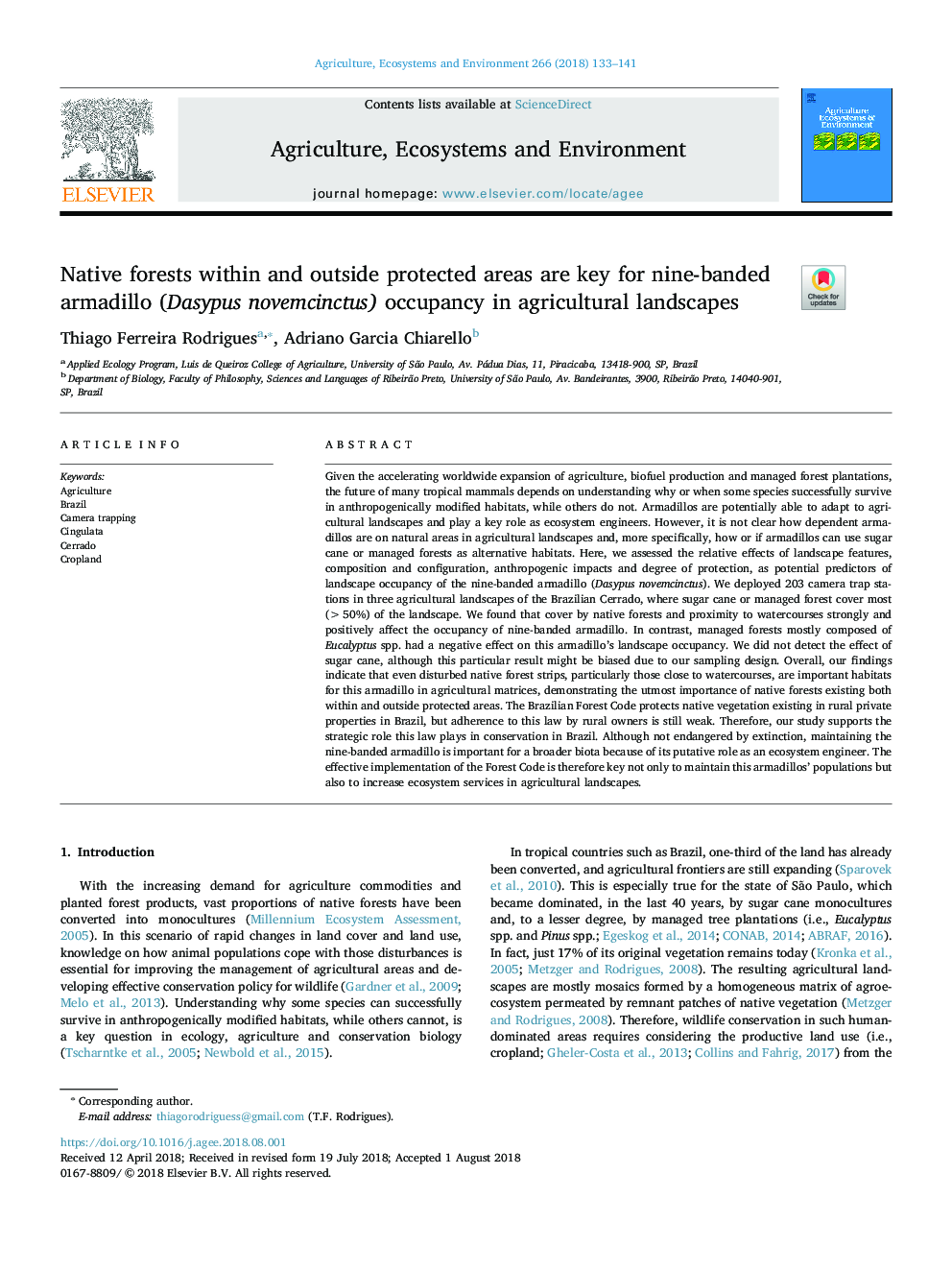| کد مقاله | کد نشریه | سال انتشار | مقاله انگلیسی | نسخه تمام متن |
|---|---|---|---|---|
| 8486949 | 1551986 | 2018 | 9 صفحه PDF | دانلود رایگان |
عنوان انگلیسی مقاله ISI
Native forests within and outside protected areas are key for nine-banded armadillo (Dasypus novemcinctus) occupancy in agricultural landscapes
دانلود مقاله + سفارش ترجمه
دانلود مقاله ISI انگلیسی
رایگان برای ایرانیان
کلمات کلیدی
موضوعات مرتبط
علوم زیستی و بیوفناوری
علوم کشاورزی و بیولوژیک
علوم زراعت و اصلاح نباتات
پیش نمایش صفحه اول مقاله

چکیده انگلیسی
Given the accelerating worldwide expansion of agriculture, biofuel production and managed forest plantations, the future of many tropical mammals depends on understanding why or when some species successfully survive in anthropogenically modified habitats, while others do not. Armadillos are potentially able to adapt to agricultural landscapes and play a key role as ecosystem engineers. However, it is not clear how dependent armadillos are on natural areas in agricultural landscapes and, more specifically, how or if armadillos can use sugar cane or managed forests as alternative habitats. Here, we assessed the relative effects of landscape features, composition and configuration, anthropogenic impacts and degree of protection, as potential predictors of landscape occupancy of the nine-banded armadillo (Dasypus novemcinctus). We deployed 203 camera trap stations in three agricultural landscapes of the Brazilian Cerrado, where sugar cane or managed forest cover most (>50%) of the landscape. We found that cover by native forests and proximity to watercourses strongly and positively affect the occupancy of nine-banded armadillo. In contrast, managed forests mostly composed of Eucalyptus spp. had a negative effect on this armadillo's landscape occupancy. We did not detect the effect of sugar cane, although this particular result might be biased due to our sampling design. Overall, our findings indicate that even disturbed native forest strips, particularly those close to watercourses, are important habitats for this armadillo in agricultural matrices, demonstrating the utmost importance of native forests existing both within and outside protected areas. The Brazilian Forest Code protects native vegetation existing in rural private properties in Brazil, but adherence to this law by rural owners is still weak. Therefore, our study supports the strategic role this law plays in conservation in Brazil. Although not endangered by extinction, maintaining the nine-banded armadillo is important for a broader biota because of its putative role as an ecosystem engineer. The effective implementation of the Forest Code is therefore key not only to maintain this armadillos' populations but also to increase ecosystem services in agricultural landscapes.
ناشر
Database: Elsevier - ScienceDirect (ساینس دایرکت)
Journal: Agriculture, Ecosystems & Environment - Volume 266, 1 November 2018, Pages 133-141
Journal: Agriculture, Ecosystems & Environment - Volume 266, 1 November 2018, Pages 133-141
نویسندگان
Thiago Ferreira Rodrigues, Adriano Garcia Chiarello,